
Our self-guided tour began with these lilies...
5 March KM47 Bonglo, Atok
On another bright sunny morning I had breakfast and
finished packing up. After goodbyes to Jim and Mia I got a jeepney into the
center of Baguio, then walked the one kilometer north through a grimy part of
town to the Rising Sun bus terminal. Some travelers find Baguio a dirty place,
and that’s very true for much of the center with its thick diesel fumes and ugly
grubby buildings. At the station I boarded an air-conditioned bus with 4x4
seating about to depart for the long twisting journey north through the
Cordillera. The bus takes the Halsema Highway to Bontoc, though I would be
getting off after about 47 kilometers. Heavy traffic slowed progress until we
got out into the countryside, then the curvy mountain road kept speeds low. The
driver put on American country music, a favorite of people in the Cordillera. The
very scenic journey took nearly two hours and climbed high on ridges with great
views of massive valleys and lofty green peaks. Cyclists get far better
panoramas, of course, but this section has a lot of tough climbs; I’ve pedaled
it in both directions on past trips. At tiny Bonglo I got off and met up with
Vivian, a devoted pen pal since we first met when I stayed at her family’s house
on my 1982 ride in the Philippines; nowadays we use Facebook chat or e-mail
along with an occasional postcard to keep in touch. Vivian looks after her
elderly parents, both in their 80s; her father is still active in managing after
the farm and participating in community affairs, but the mother has poor memory
and needs close monitoring. Vivian told me a little about her extended family,
which includes her daughter who settled down with an American man in Michigan
and two sisters who live in Sweden. Vivian seems to have a family connection
with just about everyone in Bonglo! Perched high above the valley floor at an
elevation of 2,100 meters, the village is too high for rice growing, so people
raise vegetables and flowers in terraced fields. Cool-climate banana plants grow
too. Vivian is a good cook and knows all the popular dishes of the Philippines.
Potatoes, carrots, and other veggies come from the garden. For lunch we had
chicken adobo, which might be the national dish; it can be any meat stewed in
garlic and vinegar with vegetables. Then at dinner time we had chicken lumpia
(narrow fried spring rolls).
6 March KM47 Bonglo, Atok
Vivian fried up a big
pile of eggs for breakfast, more than we could eat, especially since I’m neither
a farm boy nor a cyclist at the moment. Last year we visited Northern Blossom
Flower Farm, a flower nursery three kilometers north in Sayangan that has become
a major tourist attraction for Filipinos. (Admission is 250 pesos; closed
Monday.) Instead of cutting and selling the flowers, the owners leave them to
bloom for the enjoyment of the public. A lot of visitors had come today, Friday,
and staff said the place becomes very crowded on weekends. Vivian met a lot of
relatives who work here, and one of them led us inside. The very popular lilies
display many different hues, as do paper flowers, snapdragons, marigolds, and
other flora. Ornamental cabbages put on showy displays in several areas. Of the
many mountains that rise across the vast Agno River Valley to the east, Mt.
Pulag is the highest in Luzon at 2,922 meters.

Our self-guided tour began with these lilies...
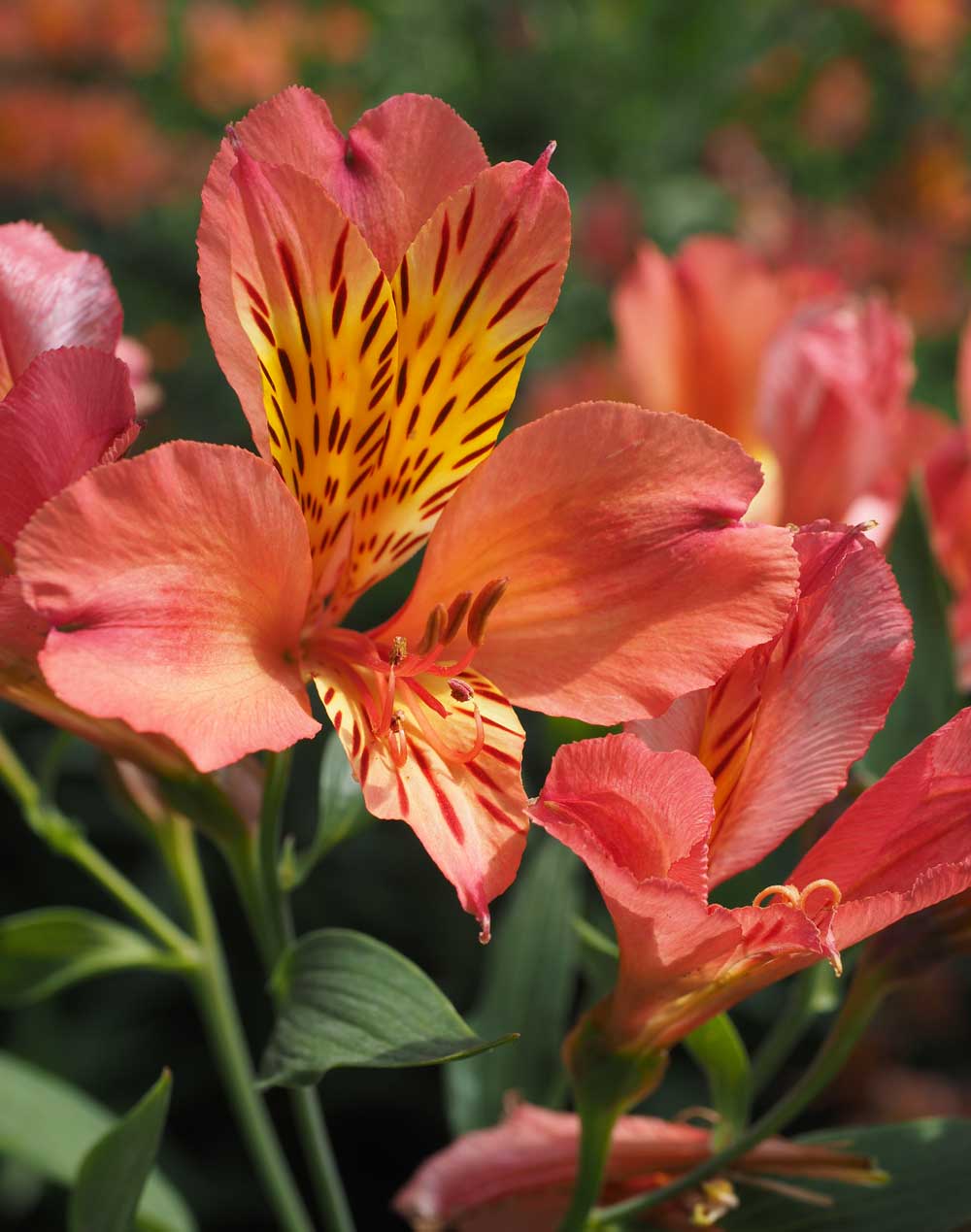
Of many hues.
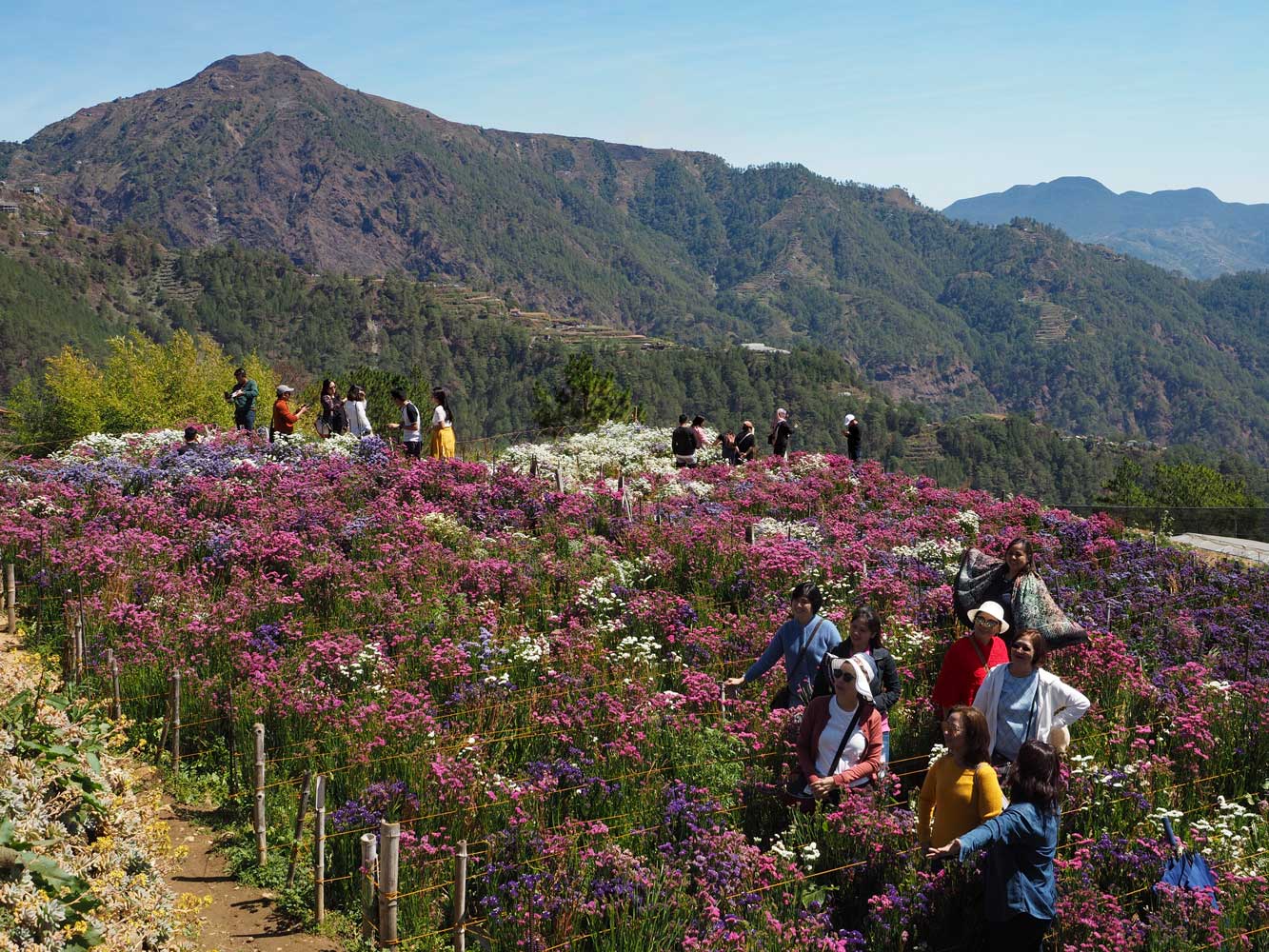
Then we went outside to see more flowers. I think the peak on the left is
Mt. Singakalsa.

I liked this color of the paper flowers.
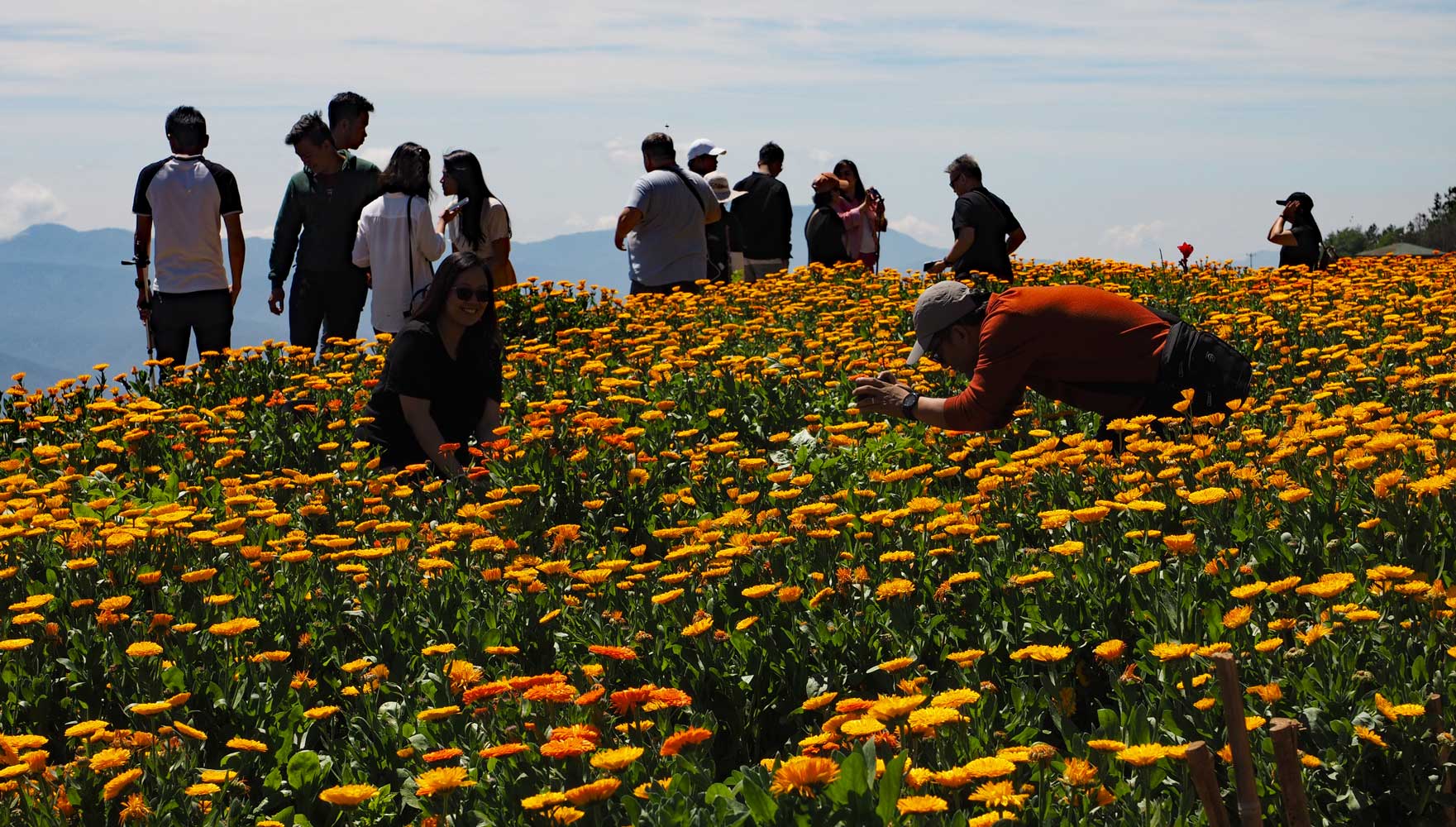
Among the marigolds
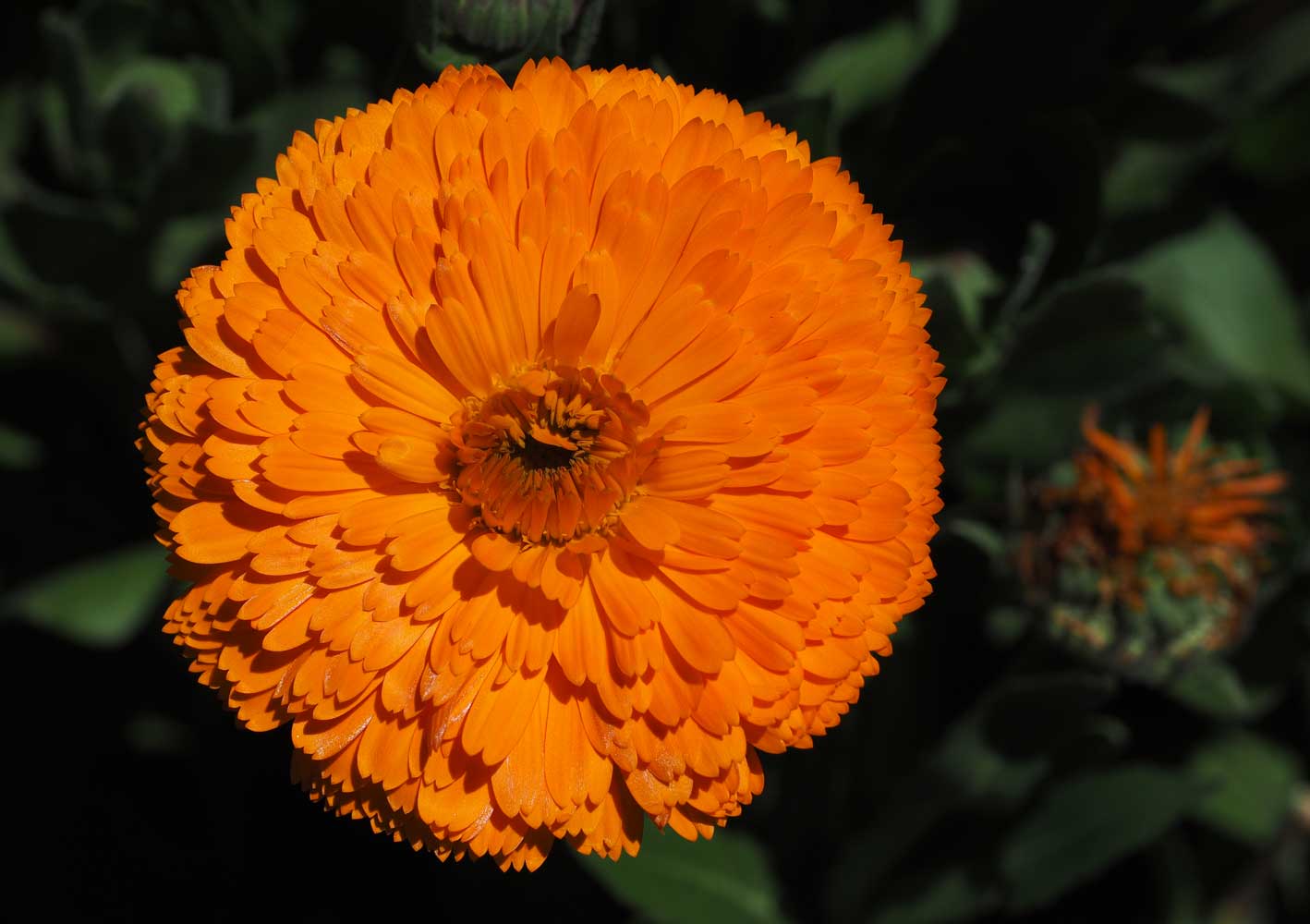
Face to face with a marigold
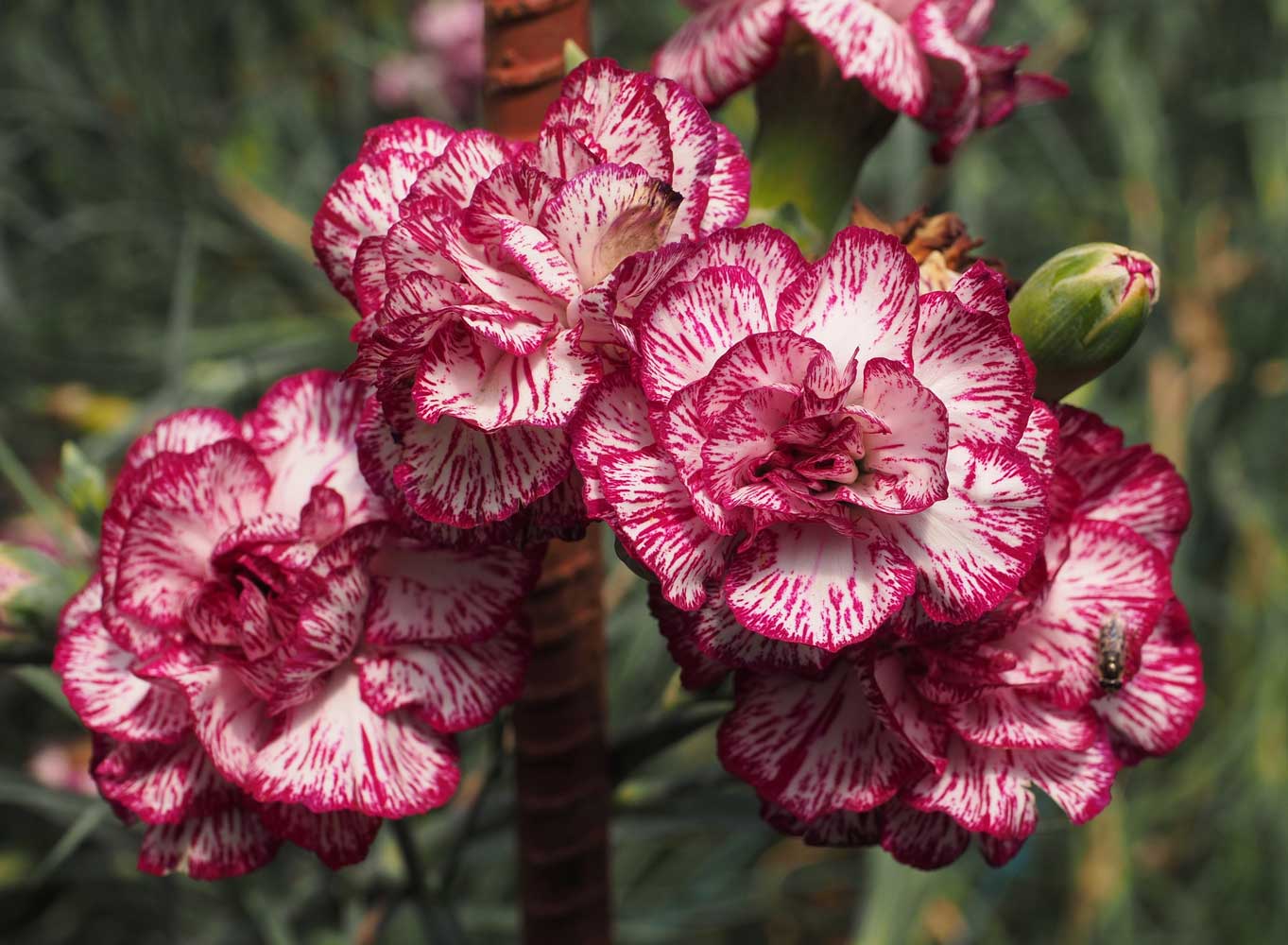
Another beautiful bloom
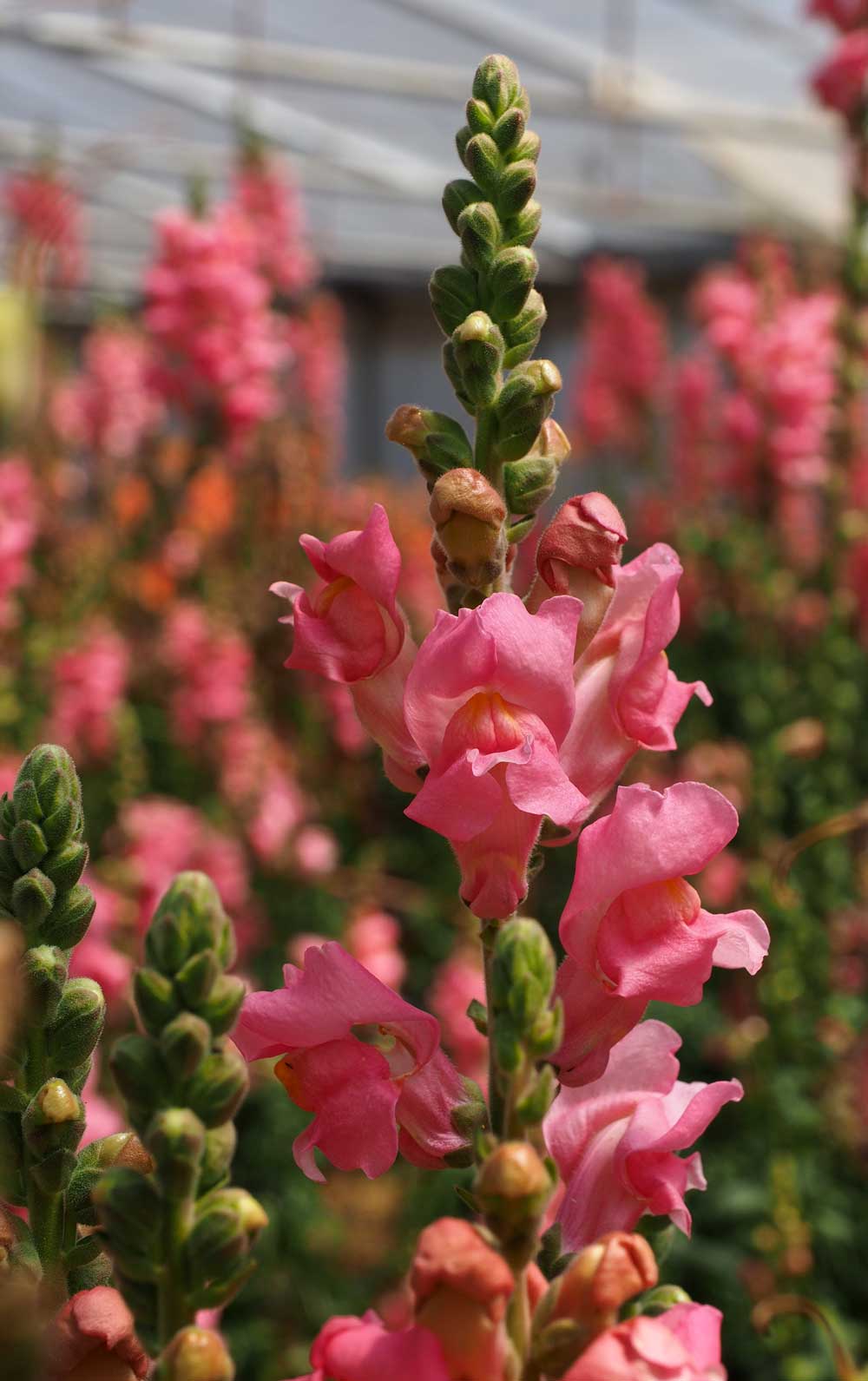
Snapdragons galore! The Latin name Antirrhinium means ‘like a nose
or snout.’

Lots of views too! The highest summit in the distance is Mt. Pulag.
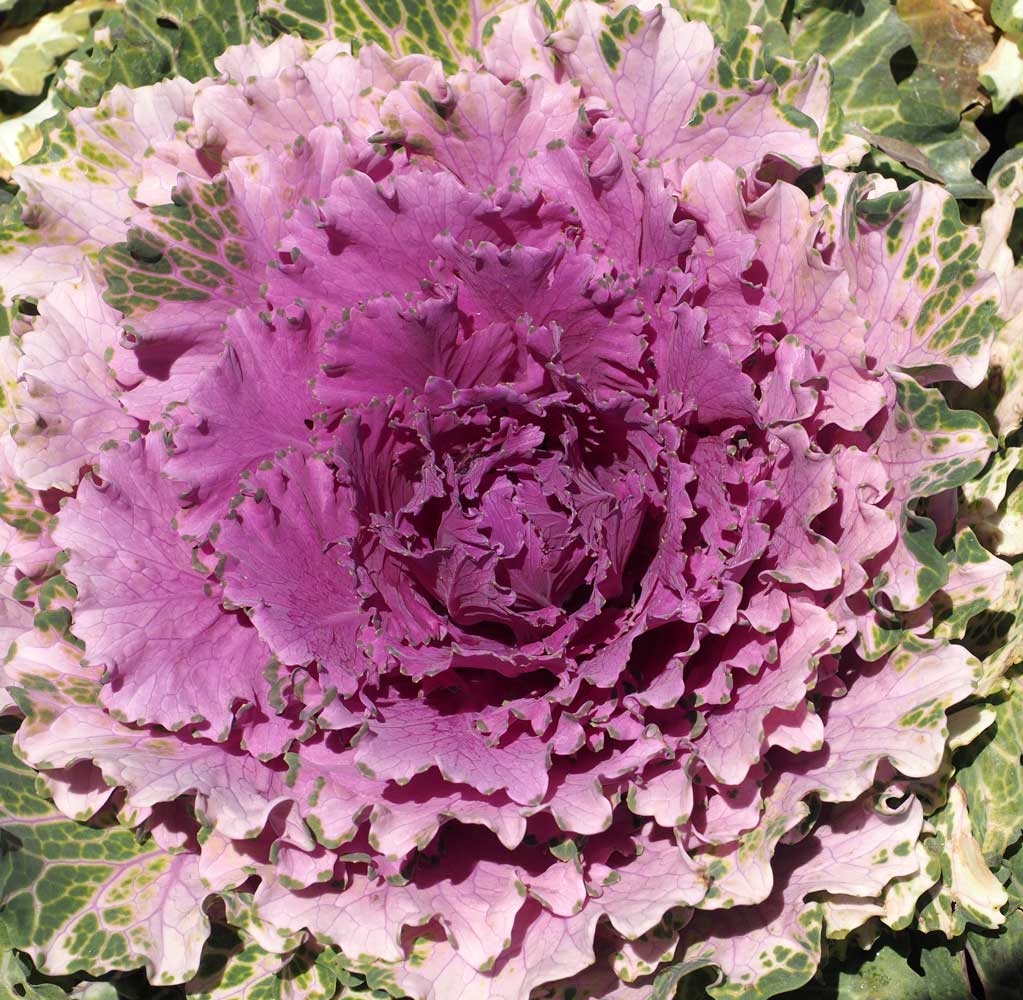
One of the many ornamental cabbages
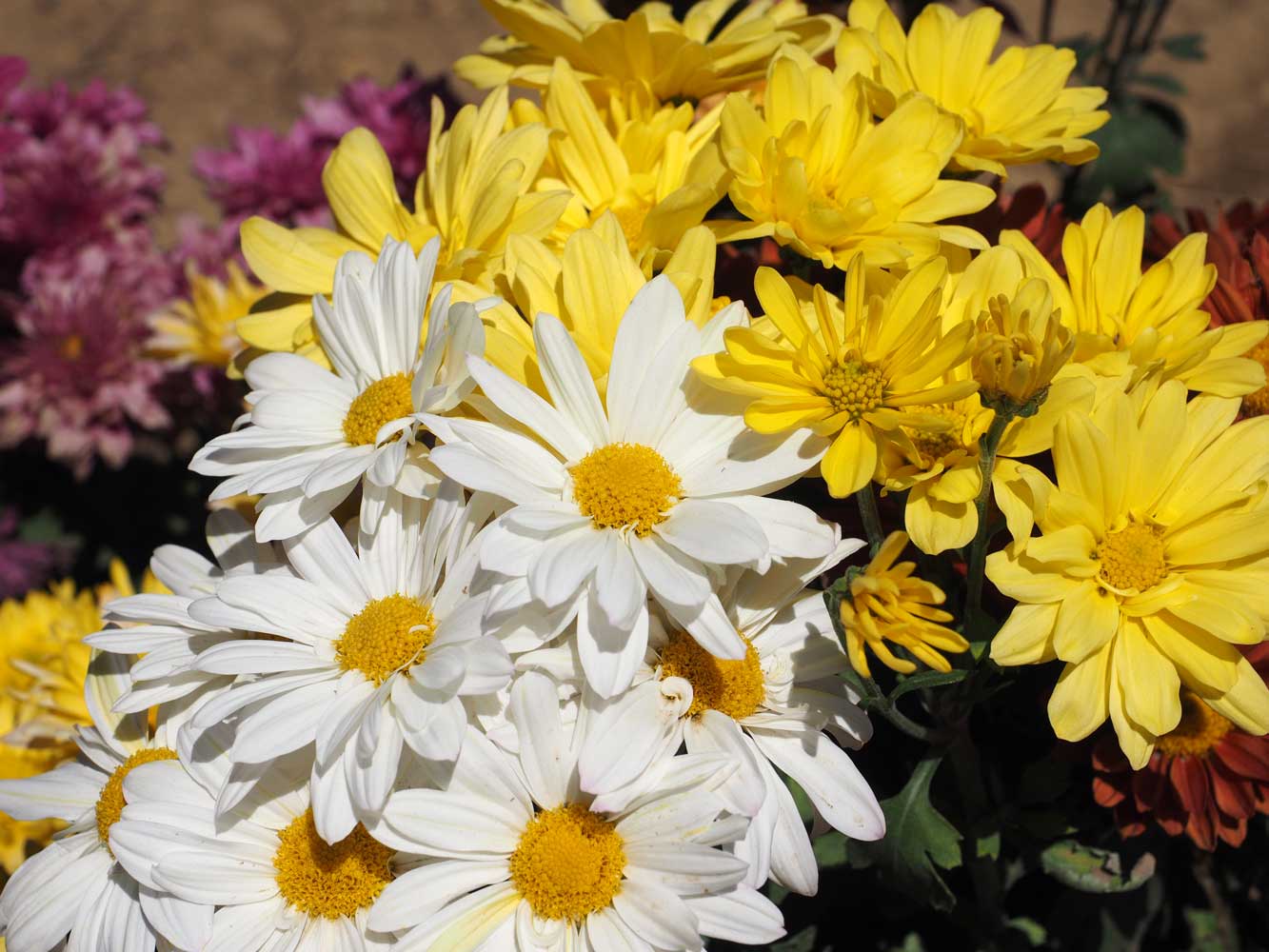
Cheery daiseys in a mixed bed

These are only the lower levels of the vast gardens!
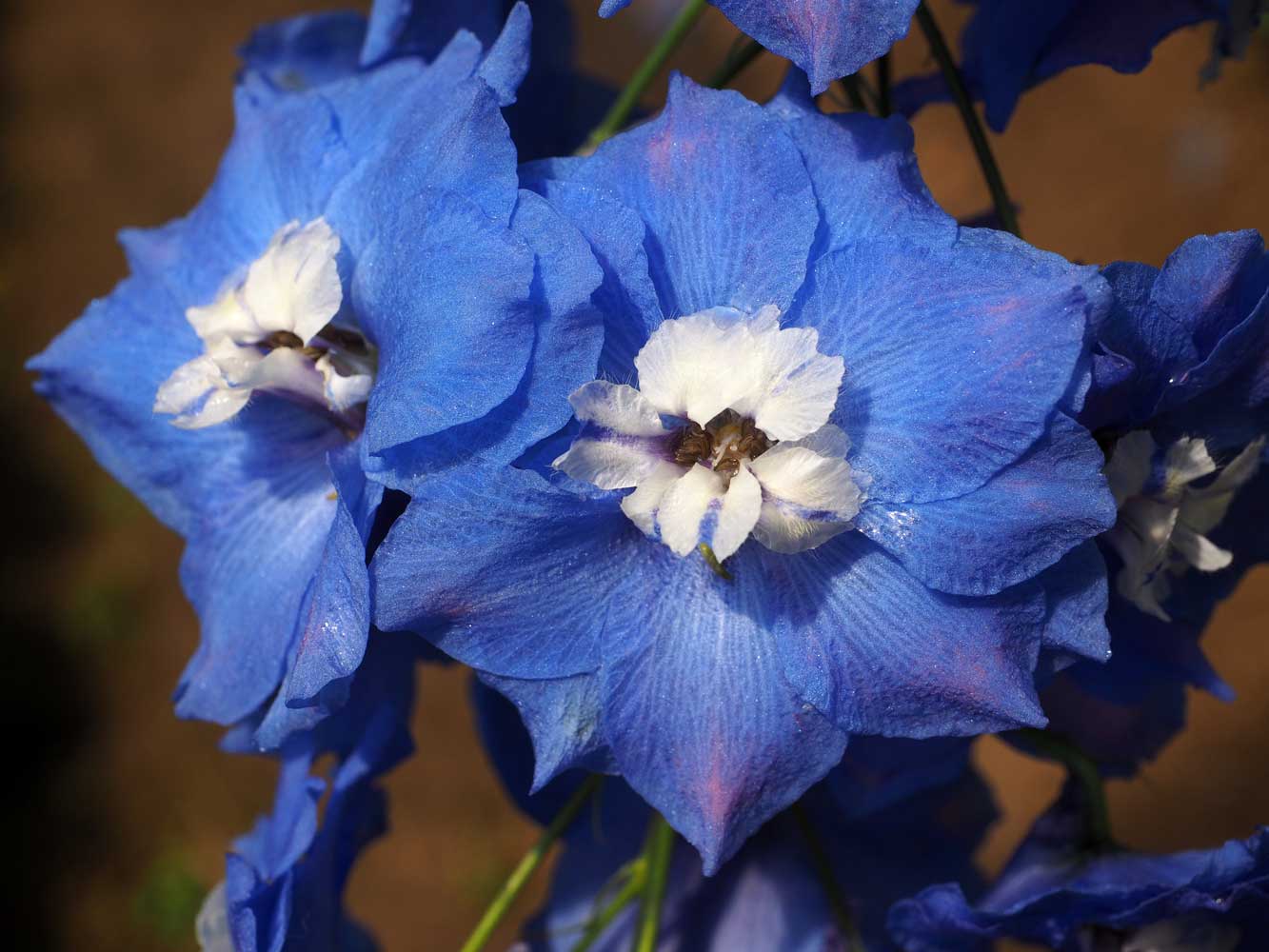
Delphiniums are named after the flower buds which resemble the nose of a
dolphin (delphis).
We then walked into central Sayangan for lunch—fried rice with egg and
vegetables for me and fried rice with a chicken leg for Vivian—and some grocery
shopping. Vivian, like most Filipinos, loves to eat pork, so she picked up some
at a tiny butcher’s stall for tonight’s dinner.
7 March KM47
Bonglo, Atok
Vivian had told me about three tunnels in the ridge above Bonglo, although
it’s not clear who had made them or when. This morning we decided to hike there,
and after breakfast began walking south along the Halsema Highway with great
views to the east but having to watch out for traffic. A crowd had gathered in a
field of Bonglo for a death anniversary celebration, and two black pigs about to
be slaughtered would provide the main course. In a couple kilometers we reached
the saddle where the highway crosses to the other side of the ridge, then turned
right on a narrow concrete path. I think this is what Google maps shows as the
trailhead for Osukan Spanish Trail, but the trail itself doesn’t appear on
either Google maps or Maps.me. The paved trail made for easy walking as it
gently climbed up the far side of the ridge with fine panoramas of deep valleys
and lofty ridges to the west. Finally we reached the three short tunnels through
which the trail bypasses a section of vertiginous cliffs. Beyond the tunnels the
grade steepened with many steps to climb until we reached the ridge top and
trail’s end. We could have continued on a road to Sayangan about 3.5 kilometers
away, but Vivian didn’t wish to be seen there in her informal ‘house clothes,’
so we turned down concrete steps toward Bonglo, far below. The trail passed a
spring and became rocky. A farmer directed us across fields, then we continued
the steep descent on a rough trail. Along the way we stopped at a couple houses
for Vivian to say hello to her relations. Around noon we reached home after
about 2.5 hours of very scenic hiking.
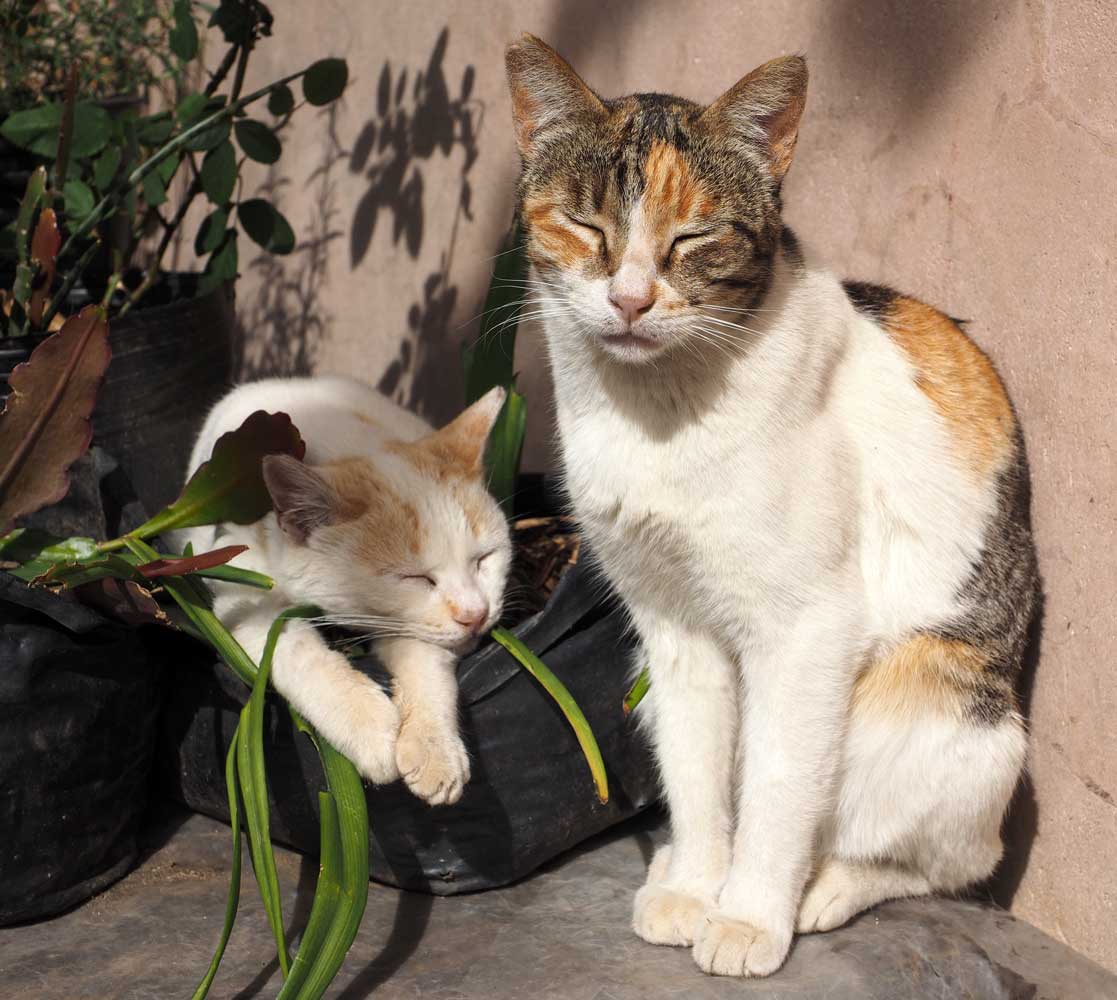
Cats at Vivian’s house soak up the morning sun.
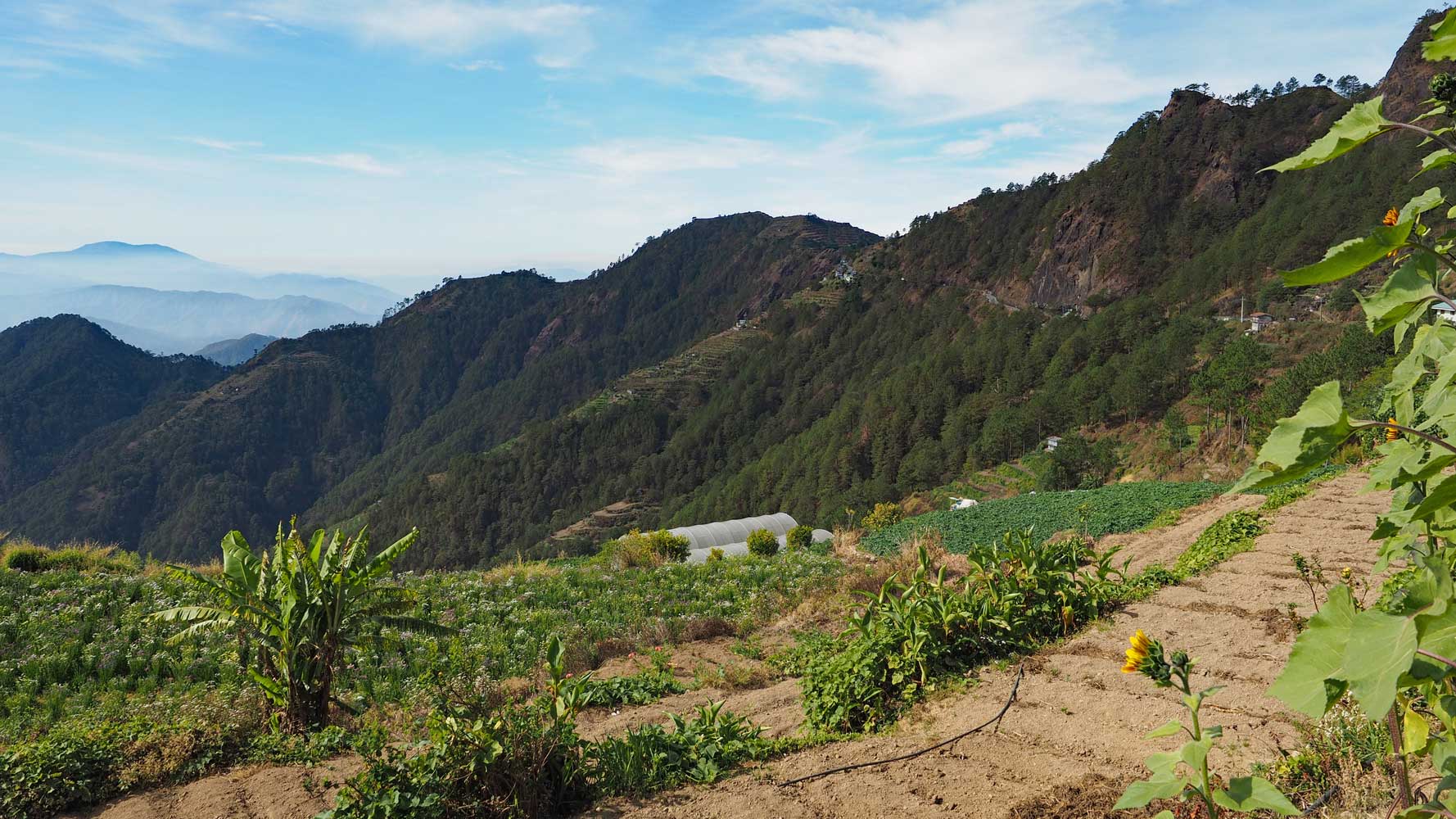
From Bonglo we will be following the Halsema Highway, visible on the right,
to where it cuts over the ridge.

Flower and veggie terraces from the trail; that’s the Halsema Highway to
Baguio high on the left.
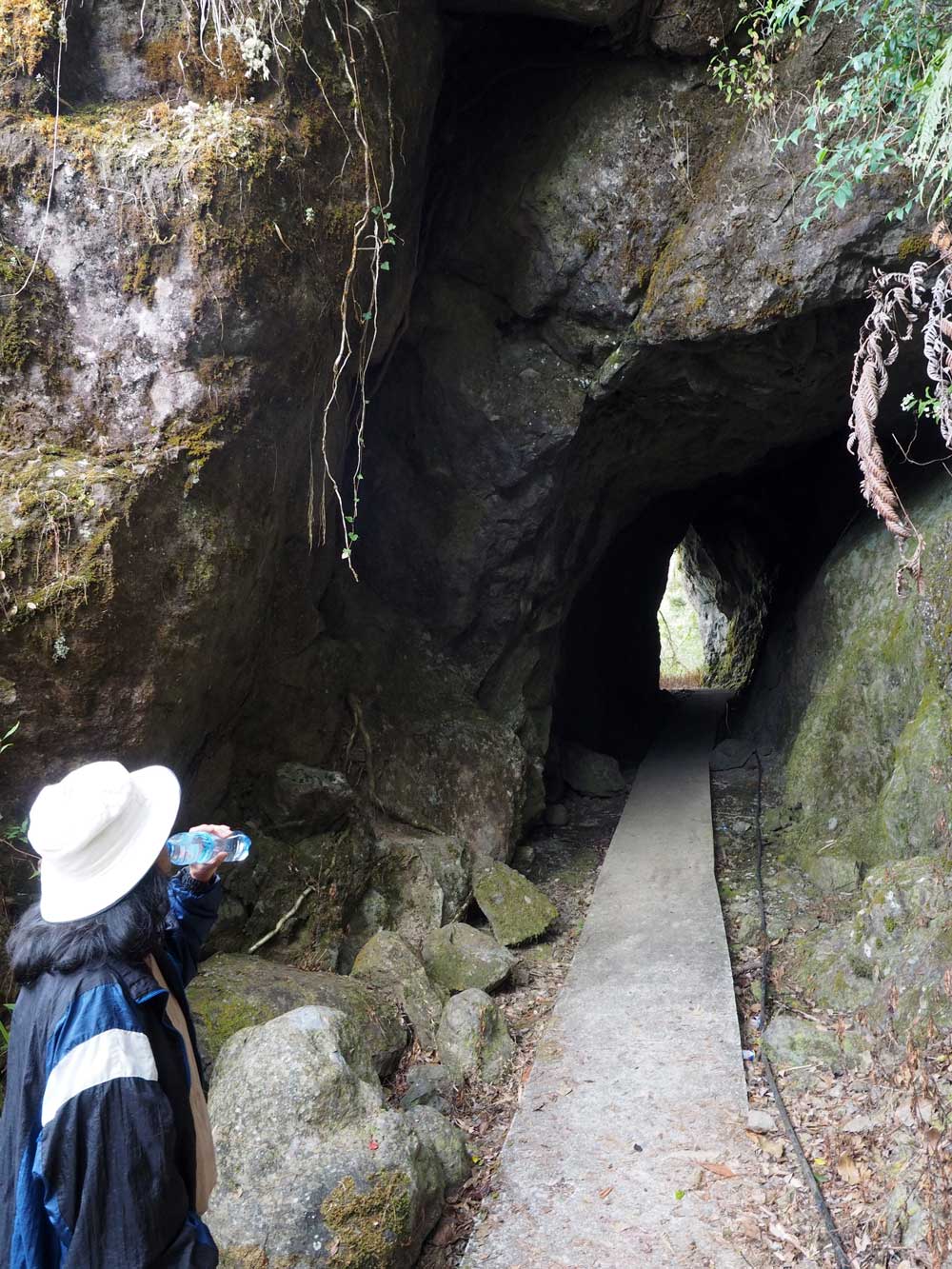
Vivian takes a break at the first tunnel.
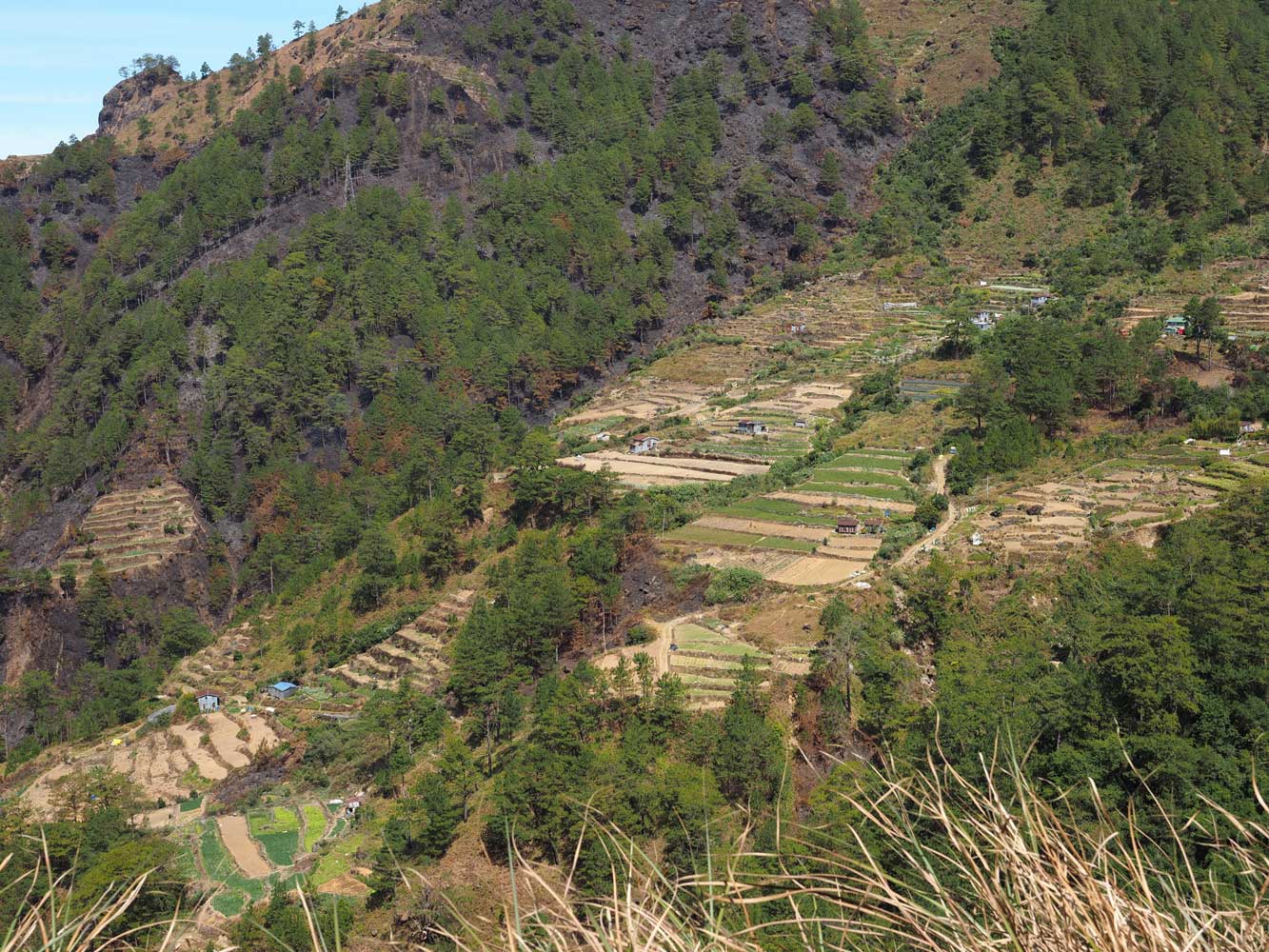
Farms and a recent burn area across a valley from the trail

View to the north on the descent
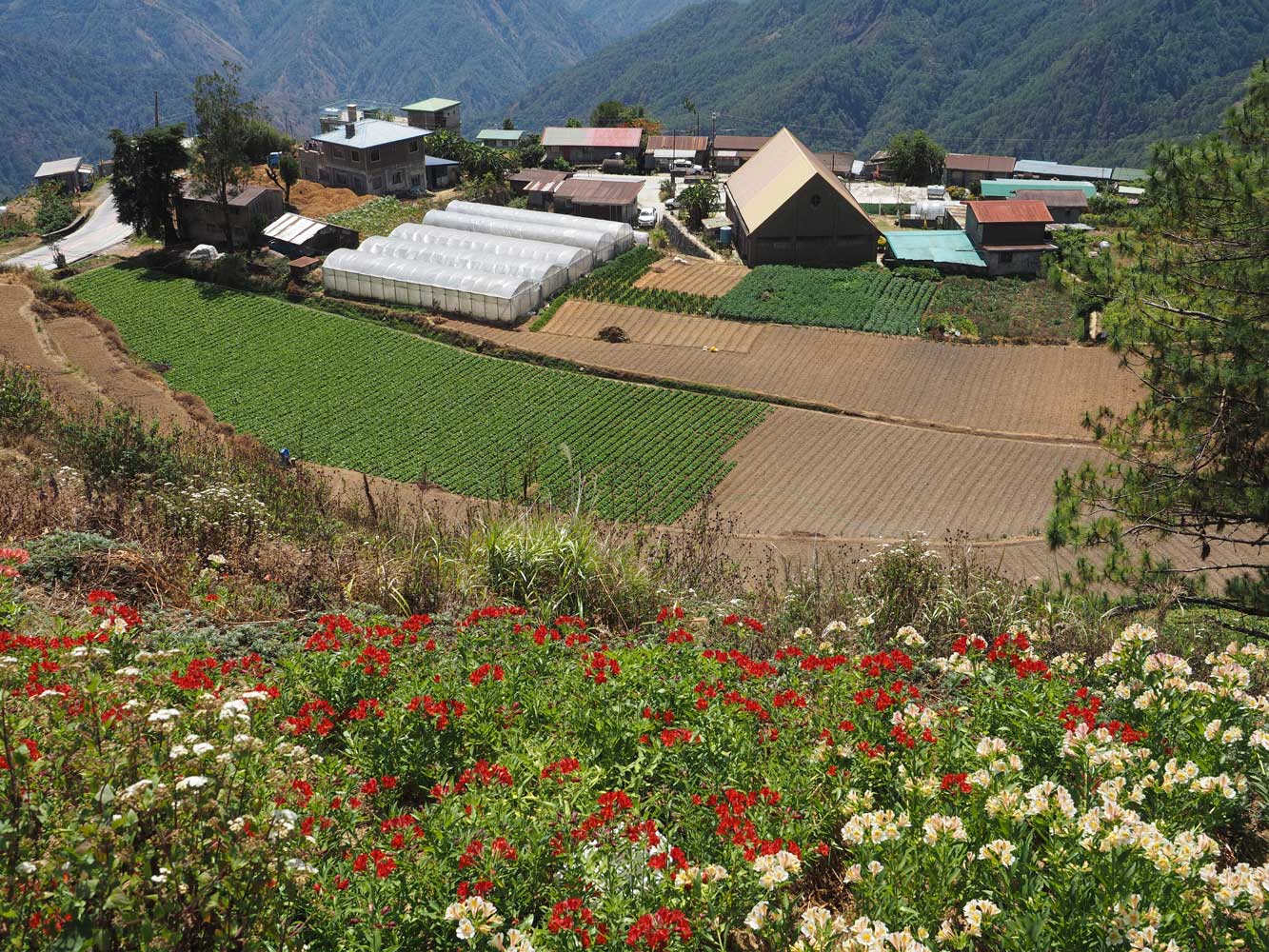
We near Bonglo; the large building with a peaked roof is the UCCP Church
that Vivian attends.
For lunch I was content to nibble on chocolate or strawberry bars purchased
from a little bakery across the street. In the afternoon I got working on photos
and journal writing. Vivian, ever industrious, did laundry by hand, then fixed a
chicken lumpia with a different recipe than two days ago.
8 March
KM47 Bonglo, Atok
In late morning we went across the highway to the UCCP Church, a
Protestant denomination introduced by American missionaries in the early 1900s.
Normally Vivian sings in the choir, but today a small group of young adult women
sang. A group of cute little kids also gave a singing performance. Men played
two guitars and a keyboard while a small boy ably handled the percussion. The
congregation sang hymns, about half in the local language and half in English.
Otherwise the service used mostly the local language. A woman gave the sermon, a
bit too long according to Vivian.

Children
offer songs.
9 March KM47 Bonglo, Atok
Vivian had talked about a garden called ‘Sakura
Park’ atop the hills to the north, and this morning four of her relations and
friends joined us for a picnic there. Luckily one of them had a large vehicle so
we could easily go and return. We drove three kilometers north to the market
town of Sayangan for take-out pancit (stir-fried noodles) and other picnic
supplies. It’s a very ramshackle looking market town, but with lots of shops and
restaurants. Back on the highway we went one kilometer farther north, then
turned onto a one-lane, mostly paved road that climbed into rolling hills
covered with vegetable farms, especially cabbage fields. Our driver went past
the Sakura Park turnoff and continued to Our Lady of Lourdes Grotto, a Catholic
religious site and scenic overlook amid massive boulders. Entry cost just 20
pesos, then we walked past lots of small succulents and cacti for sale to the
little grotto, occasionally used for church services. An overlook just beyond
provided a fine panorama of farmlands backed by deep valleys and steep
mountains. A few of us were brave enough to rock-scramble up the highest
boulder.

Shopping in an
old-fashioned general store in Siangan
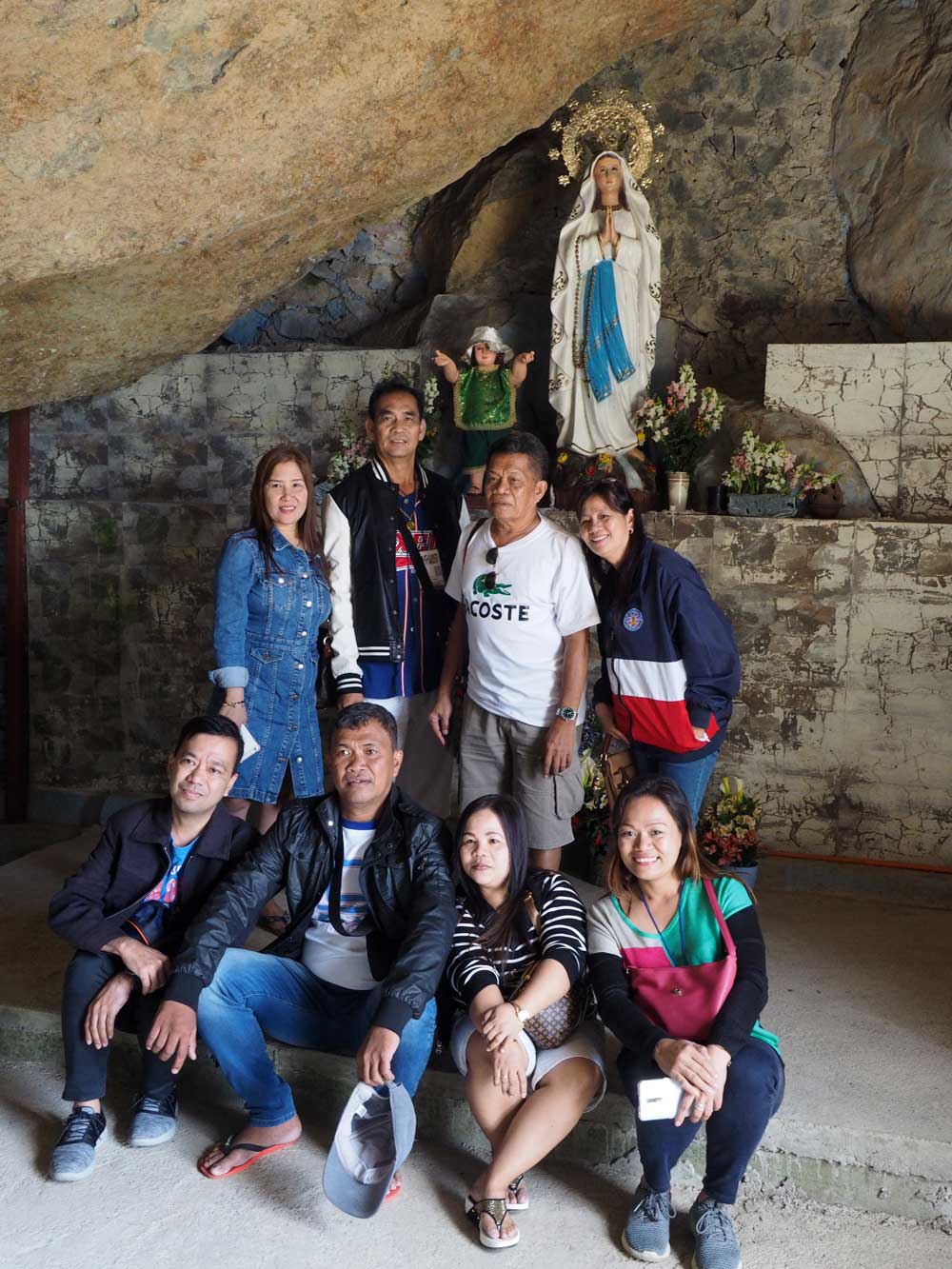
Visitors pose
in Our Lady of Lourdes Grotto.
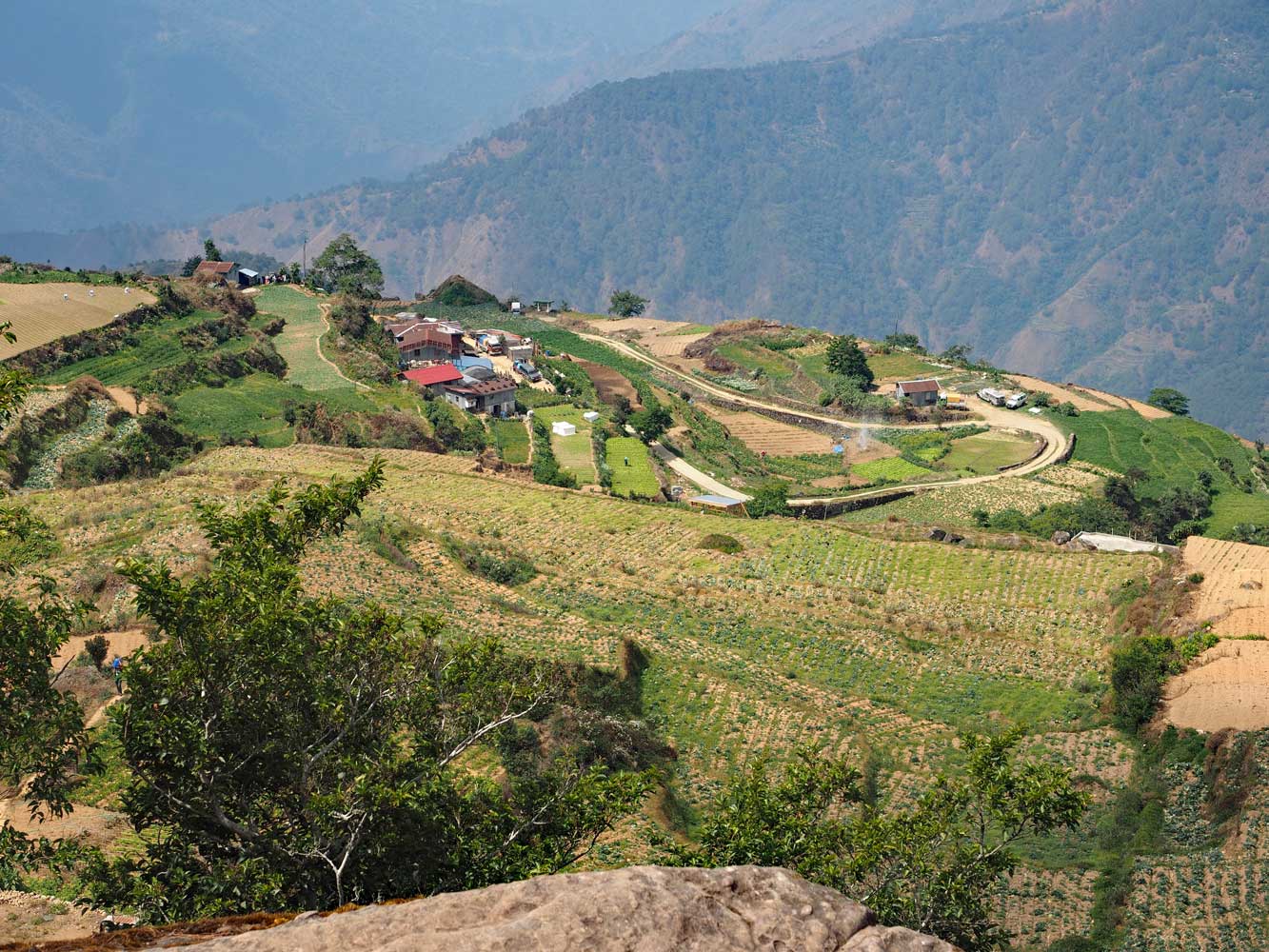
Farmlands
perched on the edge of a deep valley near Our Lady of Lourdes Grotto
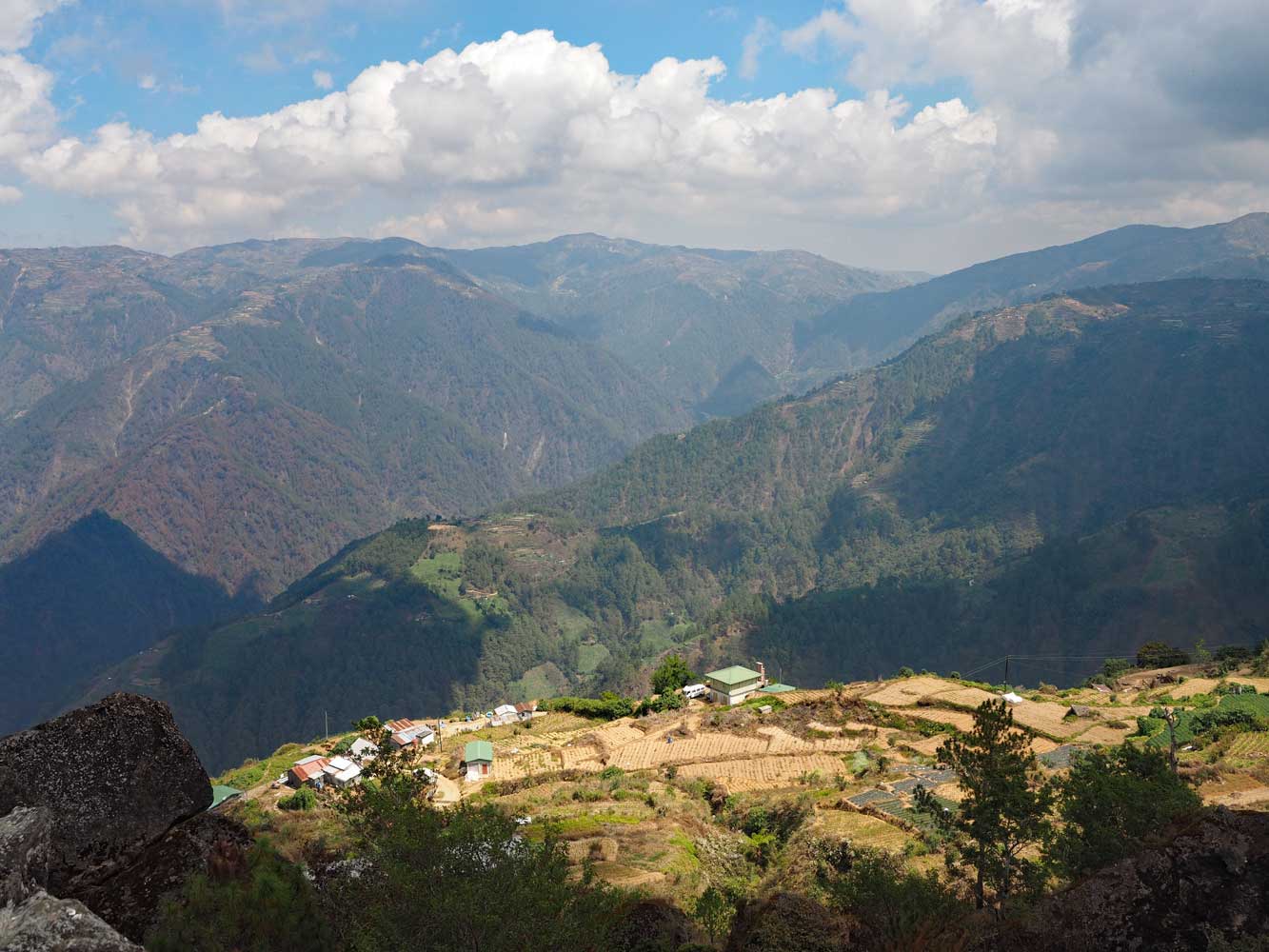
Another view
from near Our Lady of Lourdes Grotto
We then backtracked to Sakura Park, also known as Haights Place, which turned out to be a recreation area with flower beds, picnic tables, and a restaurant. The rows of young cherry trees had but one solitary pink blossom. After a leisurely picnic I wandered through flowerbeds full of colorful lilies, snapdragons, sunflowers, and ornamental cabbages—similar to Northern Blossom Flower Farm but on a much smaller scale. Back in Bonglo two of the women invited Vivian and me for a chat about Christianity over coffee and tea. For dinner Vivian served a pile of leftover pancit plus a pork adobo with tasty local potatoes. After dinner I finally brought this journal up to date with selected photos.
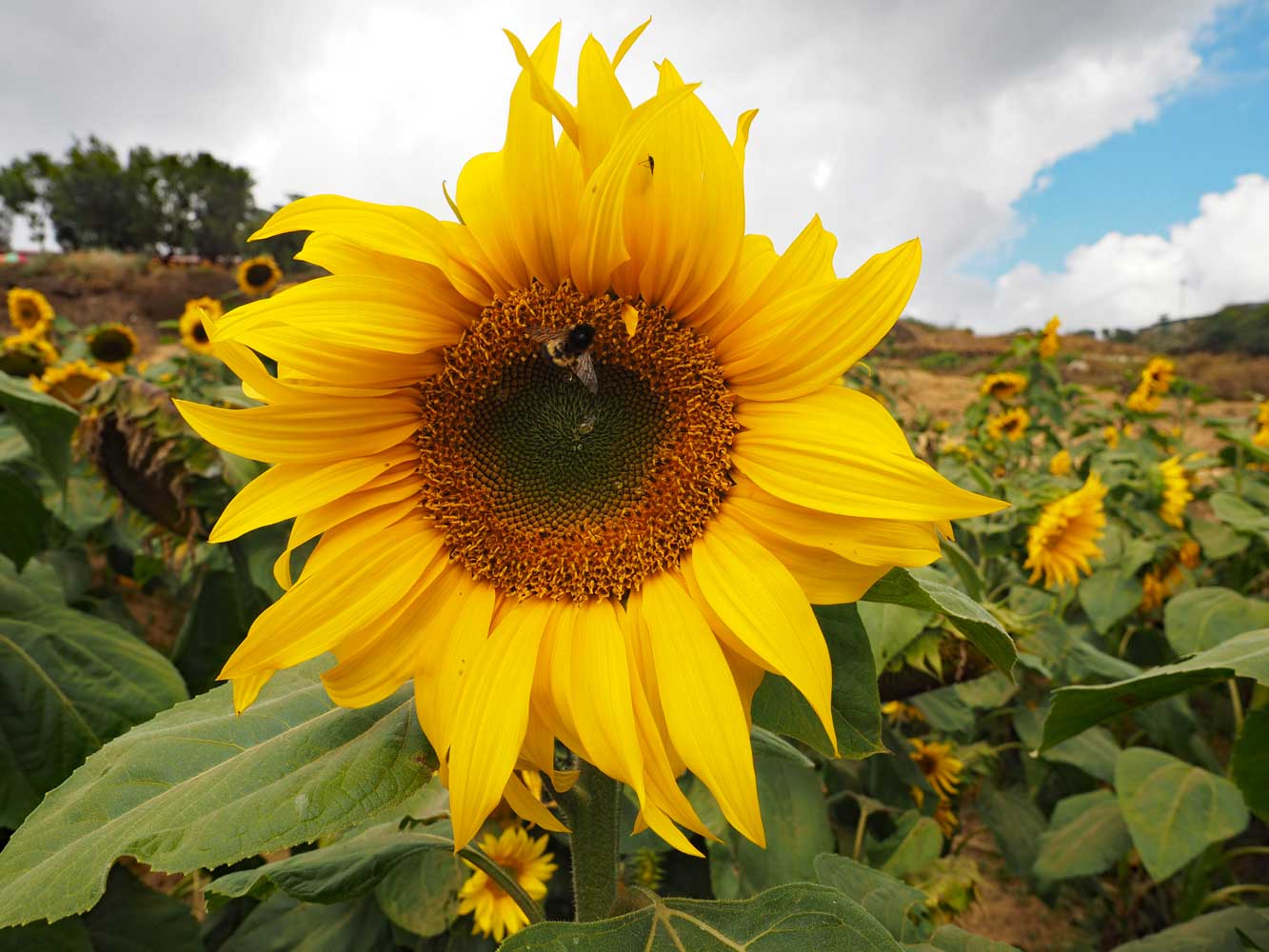
A field of
sunflowers at Haights Place/Sakura Park
On to the Philippines—Part 3: Down to
Manila, Out to Palawan Island, then Announcement of a Manila Lockdown
Back to beginning of “Backpacking 2020: India, Singapore, and Philippines”